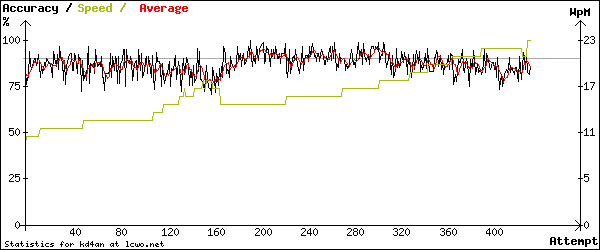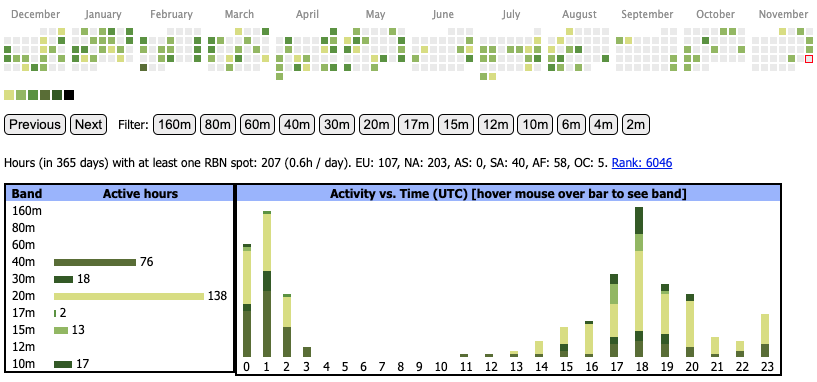I have always been a nerd. As a kid, my first three big purchases with my own money were a pair of binoculars, Motorola walkie-talkies, and rechargeable batteries to power them. My brother and I played with those for years - at the house, at the park, and in many other settings. My introduction to ham radio was by reading Hardy Boys novels, including The Short-Wave Mystery. I also met someone who worked at Trans World Radio and showed me his mobile radio setup that could talk with South America.
In 2020, about 5 years after graduating college, I was looking for a hobby. The prior years had been busy with young kids and working hard on AWS and Red Hat certifications for work. Some friends were discussing what were the best radios for camping, and that triggered the thought I should get licensed and start playing with ham radio. After that, I channeled my energy into learning about radio. I couldn’t just be an amateur radio operator, I had to get the highest license class. I couldn’t just do any communication mode, I had to pick the most challenging one - CW or Morse code. I couldn’t just be an average CW operator, I had to get to the top of the speed distribution! :-)
Timeline of Progress
- March 2020, literally a week before everything shut down due to COVID: I received my amateur radio license after passing the first two license levels (Technician and General)
- End of summer 2020: upgraded to Amateur Extra, the highest license class, when remote testing opportunities opened up
- February 2021: started learning Morse code on my own on the computer
- Fall 2021: joined Long Island CW Club and started learning to head copy without writing anything down
- January 2022: CW Academy Intermediate class with John N8AA, 20 words per minute at the end
- Summer 2022: CW Academy Advanced class with Phil NE0S, 30 words per minute at the end
- Stable speed throughout 2023 as I ramped down intense practice. I can converse at ~35-40 wpm and contest at ~30 wpm.
Resources for Learning Morse Code
Phase 1 - learning the letters (7 months)
I started my Morse code journey using the website lcwo.net, which stands for “Learn CW Online.” This site will teach you how to recognize the letters and numbers and type them out as you hear them come in. It uses two strategies for making the learning process “stick” as much as possible. The “Koch Method” progresses a specific sequence of letters hitting distinctive sounds first. You start with two letters, learn those to a desired accuracy level (80-90%), and then add the next. This repeats until you know the full alphabet. The second technique, Farnsworth spacing, keeps the speed of the individual letters high and leaves more space between letters to give you a chance to think and get the letter written down. The worst thing you can do in learning Morse code is to count the “dits” and “dahs.” That will plateau your speed and block you from progressing.
One of my favorite parts about LCWO was the progress statistics it gathers. Seeing the visual indicator of improvement was motivating. You can see how in attempts #120-160, I ramped up my speed and my accuracy dropped. But then when I reset to a new baseline, my accuracy was higher than before. This parallels keeping a log for working out - something I have failed to do haha!

My first Morse code contact was at Field Day in June of 2021. It took me four hours to make a single contact. I had not anticipated how quickly people would be going in the contest. I thought the short exchange would make up for a bit more speed. Oops! However, I was determined to make the contact once I had committed to the idea. I tried for about an hour at the group site with the other club members. Then when I went home, the next day I tried for about another 3 to finally get it. I used a memory keyer with my call sign and exchange (what you send to the other station in a contest) programmed to make sure I wouldn’t mess up sending. This just goes to show it is never easy on your first attempt, but you can get through it! It just gets easier with each one after that.
Upon reflecting on this phase, there were some things I did well and others I would have changed. I think I did a good job knowing where my proficiency target was and taking steps to work towards that. To that end, I did my LCWO practice at a character speed of 30 wpm with spacing between for an effective speed of 10. This helped me not count the dots and dashes, but I did still find myself repeating the letter sound to myself in the space between letters in order to interpret. That turned out to be a habit I needed to break later, but I didn’t let it go too far so it wasn’t too bad. In order to transition to getting on the air (targeting 15 wpm), I would bump the character speed down 2 for every effective speed bump up of 1. The goal was to meet in the middle.
My regret from this period in my journey was not getting on the air and having live practice with other people. I am a perfectionist, so I think this influenced my desire to have everything “not perfect but almost” before getting on the air. In reality, people are super supportive and gracious with someone starting out in their Morse code journey. They want you to get on the air and talk with them since they know that is the best way to make progress. I just did receiving practice these months, but should have done some sending as well as getting on the air. Receiving or “copying” is the part that takes the most work, but you don’t want to neglect sending either. Hearing yourself send with paddles and a keyer can give a helpful reinforcement cycle.
Phase 2 - online classes and head copy (10 months)
My next phase was trying to get on the air more and working towards head copy. Resources during this time included Long Island CW Club, CW Ops Academy, and Morse Code Ninja . LICW and CWA have video classes you join with other students working on learning Morse code. Morse Code Ninja by Kurt Zoglmann, AD0WE. Every page on his site contains helpful information, but the advice page is spot-on. I won’t repeat it all here, but the crux is to try to practice at the proficiency level you want to achieve, not what you can do now. Going too slow will cause you to hit plateaus. Going faster will seemingly take a while for it to “click”, but you’ll get where you want to go in the end.
Head copy is like learning to touch type without looking at the keyboard. Practice is a binary option - either you look at the keyboard or you don’t. In Morse code, either you write it down or you don’t. As the saying goes, you have to get comfortable with uncomfortable practice. Just as touch typing provides huge benefits in the workplace, head copying Morse code will make the whole experience much more relaxed and enjoyable than trying to scramble all the time worried you won’t be able to write fast enough.
The program that helped me the most in reaching my CW goal was CW Academy , hosted by the organization CWOps. Their program facilitates a strong level of immersion and causes real gains. I had the goal coming out of the advanced class to be at 25 words per minute (the benchmark for joining the club), but I passed that and was comfortable at 30! CW Academy runs 3 times a year for an 8 week semester with classes twice a week. There are daily assignments between classes. That intense sprint was a good model for me to level up in each class.
Head copy allowed me more opportunities for practice. Instead of getting in 15 minutes a day at the keyboard, I figured out ways to fit in almost an hour a day using the Morse Ninja playlists. I would listen to those while doing my morning exercise or doing the dishes at night.
Phase 3 - conversational speed practice (6 months)
Coming out of the CW Academy classes, I was doing fine in all practical purposes. However, I wanted to be the best that I could be and wanted to continue to get better. One benefit you get at higher speeds is conversation gets more comfortable. The average person speaks at
around 120 words per minute.
You’re not going to match that with Morse code, but 35 wpm is decidedly more enjoyable to have a longer conversation than even 25. Some people like
Steve WF3T
will use computers generating Morse code from keyboard input to chat in the 40s and 50s wpm. Audio for these can be found at
streammyaudio.com archive
with titles CRSnet.mp3.
The way I worked on this speed was by reading ebooks in Morse code. I downloaded copyright-free books from
Project Gutenberg
and converted them to Morse code. I edited them to remove extraneous punctuation and slang ('an to and) and stored them in this
Github repo
for anyone else to use. I would convert these text files to mp3s with
ebook2cw
by
Fabian Kurz,
a German ham. Those mp3s were converted into an RSS feed using a
script
by
Amine Sehili.
I would start up a web server with the RSS XML and audio files on my laptop and download them to Apple podcasts on my phone for offline (when the laptop web server was turned off) listening. All my listening was done with cheap Bluetooth hard plastic earbuds. Forgoing any attempt at sound isolation allowed me to be more present in the real world while Morse code was playing and to train my brain to decode through background noise.
In all, I practiced approximately 6 months of 15-20 minutes a day, a year of an hour a day, and then 6 months of 30 minutes a day. Mid 2023, I started writing this blog and Taekwondo, so my Morse code practice went down to around maintenance mode and using it for fun. I’ll sometimes listen to high-speed roundtable conversations by WF3T and his friends. By far, the best way to improve and maintain skills is to be on the air using them. When learning, I tried to be on the air every day. Now, my goal is 2-3 times a week. The graph below shows when automated “spotting” systems heard me calling out for radio contacts.
Wishing you the very best on your own Morse code journey!
